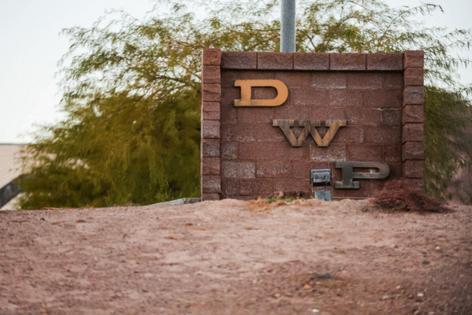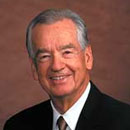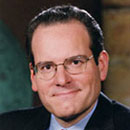LA sends masses of tourists to Vegas -- and owns real estate nearby
Published in Business News
Los Angeles has long funneled masses of tourists to Las Vegas, providing much of the fuel for the casino-heavy economy here.
But L.A. also has a more permanent foothold in Southern Nevada.
The city of Los Angeles owns a portfolio of real estate within about 30 miles of the Las Vegas Strip, property records show, underscoring decades-old ties to the region that run deeper than many locals may realize.
The Los Angeles Department of Water and Power runs a hilltop lodge in Boulder City and owns another facility nearby for DWP crews who work on transmission lines. It also owns at least 14 acres of land near Henderson’s Lake Las Vegas community and a 2.5-acre plot next to a housing tract in Henderson along Interstate 11, property records indicate.
Early last year, Boulder City’s then-City Manager Taylour Tedder told the Review-Journal that he was aware of the lodge but not the DWP operations outpost in his city.
On a visit last fall, a truck with the city of Los Angeles’ seal, and the words “WATER & POWER” below it, was parked outside the operations facility — some 280 miles from the department’s main office in downtown Los Angeles.
“I have no idea what they do there,” Tedder said.
Connections to the dam
The city of L.A.’s real estate presence in Boulder City may seem random but is far from it, given Los Angeles’ ties to the iconic infrastructure project nearby: Hoover Dam.
When Herbert Hoover became secretary of commerce in 1921, the future president proposed building a dam on the Colorado River, as it would provide flood control, irrigation and a dependable water supply for Southern California, according to the Herbert Hoover Presidential Library and Museum.
Los Angeles set out to get power from Boulder Dam — as it was originally called — for the rapidly growing city. A 266-mile transmission line was built from the dam to downtown L.A., marking the first time the city’s water and power department ventured outside California to bring in energy, according to the DWP.
Las Vegas grew immensely after the dam was built and is still expanding, thanks in no small part to Lake Mead, the reservoir created by the dam that supplies about 90 percent of the desert metropolis’ water.
But Las Vegas was a tiny outpost in the Mojave when construction of the dam started in the early 1930s.
Los Angeles had more than 1.2 million residents in 1930, compared with 5,165 in Las Vegas.
L.A. footprint
L.A.’s lodge in Boulder City, 1400 Lodge Road, was built to house the directors of the Six Companies consortium that constructed the dam, and the lodge was turned over to the DWP after the dam was finished, said DWP spokeswoman Mia Rose Wong.
Clark County property records show the split-level, seven-bedroom house was built in 1931, spans more than 3,500 square feet and is owned by the city of Los Angeles.
The Los Angeles Daily News reported in 2015 that the lodge was rarely used by the department and that ratepayers spent more than $153,000 the prior fiscal year to run the property.
Rose Wong said the department now mainly uses the lodge for business meetings. It’s also used as a gathering spot for tours of DWP facilities in the area and nearby plants that supply power to the department, she said.
Meanwhile, the DWP operations center in Boulder City, 690 Wells Road, has 13 employees and 23 vehicles assigned to it.
The facility is owned by the DWP and houses patrol crews, telecommunications employees and mechanics, Rose Wong said, noting the staff there are “vital to the operation and maintenance of all transmission lines” from Cedar City, Utah, to Baker, California.
It also features a “DWP” monument sign out front.
Big customer
Nearly a quarter of the energy generated at Hoover Dam is allocated to Nevada, but Southern California gets a much larger share.
The Metropolitan Water District of Southern California accounts for 28.5 percent of the energy generated at Hoover Dam, Los Angeles receives 15.4 percent and electric utility Southern California Edison Co. gets 5.5 percent, according to the federal Bureau of Reclamation, which operates the dam.
Public agencies in Southern California also had a big role in the management of the massive facility.
DWP and Southern California Edison operated the dam’s generators and other equipment for 50 years, with their costs billed to the Bureau of Reclamation and allowed as a deduction from their power bills, bureau spokeswoman Michelle Helms said.
The contract ended in 1987, and the Bureau of Reclamation took full charge of the operations, she said.
DWP also owned more than 80 residences — spanning apartment buildings, dormitories and single-family homes — that housed its employees and their families during the construction of the dam, Rose Wong said.
Most were sold by 1991, she noted.
Additionally, DWP owned a commercial building at 600 Nevada Way in Boulder City that was home to its administrative and maintenance offices, she said.
Boulder City government acquired the property in 1995. Today, the city’s Parks and Recreation Department holds classes there and the Public Works Department uses some space for storage, city spokeswoman Lisa LaPlante said.
The building’s link to L.A. has not been erased, though. It declares “Department of Water and Power” above the main entrance.
___
©2025 Las Vegas Review-Journal. Visit reviewjournal.com.. Distributed by Tribune Content Agency, LLC.












Comments